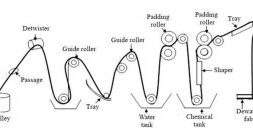How Automotive Can be Harmful to Environmental
How Automotive Can be Harmful to Environmental
A scenario in Germany in early 90’s shows how automobile can be a problem to the environment. At that time, Germany was expected to run out of landfill capacity by the year of 2000 due to the waste and one of it was from automotive waste [1]. The landfill pressure has been relieved by exporting the vehicle waste to other countries, waste dumping at sea and, to some extent, exports of used cars from Germany. Although as an alternative, vehicle that has reach their end life should be entering the recycle center, problem still arise due to the cost of recycling.
Although it seems like a simple cycle for a vehicle when it reach its end-of-life by entering a shredder machine and become separate materials making the problems solve. In reality there are pressure related to the cost for recycling waste materials. Automotive shredder residue (ASR) landfill costs in the UK were about £5 ($8) per tonne in 1992. By 1994, they had risen to about £9 ($14.4) and, by 1996, to about £15 ($24) with a new landfill tax of £7 ($11.2), giving total of £22 ($35.2)” [2]. This has make the material become more expensive compare to virgin material as an example for most plastics, it is estimated that the cost of collection, washing and reprocessing is about DM2.50 (S1.50) per kg. This means that for all commodity plastics (PE, PP, PVC and PS) it is cheaper to buy new material than to recycle.
Even though the costs become an obstacle, there is hope in reducing the cost by improving the technology to reduce the cost during recycling process. Other than that the recycle materials should be optimize in state of the usable. Although some materials are degrade in terms of its mechanical and physical properties when it is recycle such as thermoplastic materials, still the improvement of technology and suitability of the recycle materials with new products can balance the waste being produced. Automakers should also consider making use of recycle materials without depending on virgin materials and making sure that the materials used in automotive can be recycle.
Recycle is being seen as a way out throughout the waste dumping and pollution and it is already give a good sign in disposing the waste and in terms of energy savings. As to enforce it some of the countries had already implement using legislation on automakers. It shows a positive sign when major automakers are increasingly focusing on meeting the European Community (EC) 2000/53 ELV – “End Life Vehicles” standard, particularly its article 7, which requires the recycling and/or composting of automotive parts [3]. The European Commission in July 1997 sets out the following aims under Article 7: Reuse and Recovery [2]:
(a) No later than 1 January 2005, for all end of life vehicles, reuse and recycling is to be increased to a minimum of 80% by weight per vehicle.
(b) No later than 1 January 2015, for all end of life vehicles reuse and recovery is to be increased to a minimum of 95% by weight per vehicle. Within the same time limit the reuse and recycling is to be increased to a minimum of 85% by weight per vehicle.
(c) On the basis of a proposal from the commission, the Council will establish targets for reuse and recovery and for reuse and recycling for the years beyond 2015”.
According to Paul Nieuwenhuis and Peter Wells, figure 2.2 shows the phase on the environmental concern surrounding the automobile [1]. Starting from air quality in the early 50’s to sustainable era, the issue on emission release caused by automobile industry and wastes from end –of –life vehicle still the subject concern. In the year 2010, the closed-loop economy becomes new agenda. It is referring to cycle loop of material exist where it should be re-used and recycle and new material cannot be added. It also stated that during processing the waste material, any petroleum based cannot be use and emission should not be release. In the UK, using 1995 as the baseline, biodegradable waste must be reduced to 75% by 2010, to 50% by 2013 and to 35% by 2020 [4].

Figure 2.2: History of primary environmental regulatory concerns [1].
References
- Paul Nieuwenhuis and Peter Wells. The Automotive Industry and the Environment: A Technical, Business and Social Future. Cambridge: Woodhead Publishing Limited. 2003.
- I. G. Helps. Plastic in European Cars 2000-2008: A Rapra Industry Analysis Report. UK: Rapra Technology Limited. 2001.
- V. L. P. Salazar, A. L. Leao, D. S. Rosa, J. G. C. Gomez & R. C. P. Alli. Biodegradation of Coir and Sisal Applied in the Automotive Industry. Journal Polymer Environment. 2011. 19: 677-688.
- Walter Fung & Mike Hardcastle. Textiles in Automotive Engineering. Cambridge: Woodhead Publishing Ltd. 2001
Copyright :Mohd Pahmi
(8)

